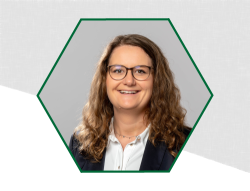The biggest challenges for laser-based powder bed fusion of metals (PBF-LB/M) are the slow production and the high part prices combined with process and component defects. Gaussian beams with fixed beam diameters and their characteristic high peak intensities are state-of-the-art in PBF-LB/M. However, Gaussian beams can cause spatter formation, keyholing, and resulting keyhole porosity due to evaporation of the melt. Laser beam shaping has been used in various publications for laser welding and PBF-LB/M to address the challenges mentioned above. Our research at the Professorship of Laser-based Additive Manufacturing focuses on developing beam-shaping technologies to improve the production speed and process quality in PBF-LB/M. The different beam shaping strategies we are evaluating are based on spatial light modulators (= change in wavefront due to local change in refractive index by tilting liquid crystals), acousto-optic deflectors (= ultra-fast deflection of the laser radiation by frequency change of acoustic sound waves), and a multi-core fiber concept (= change in relative intensity distribution via redistribution across fiber cross-section). The study will compare the performance of three different beam shaping technologies for PBF-LB/M and evaluate their design freedom and complexity. The aim is to use beam shaping to achieve a stable melt pool, increase production speed, and reduce resource and energy consumption.
Keywords
- Additive Manufacturing
- Beam Shaping
- Laser-Based Powder Bed Fusion Of Metals

